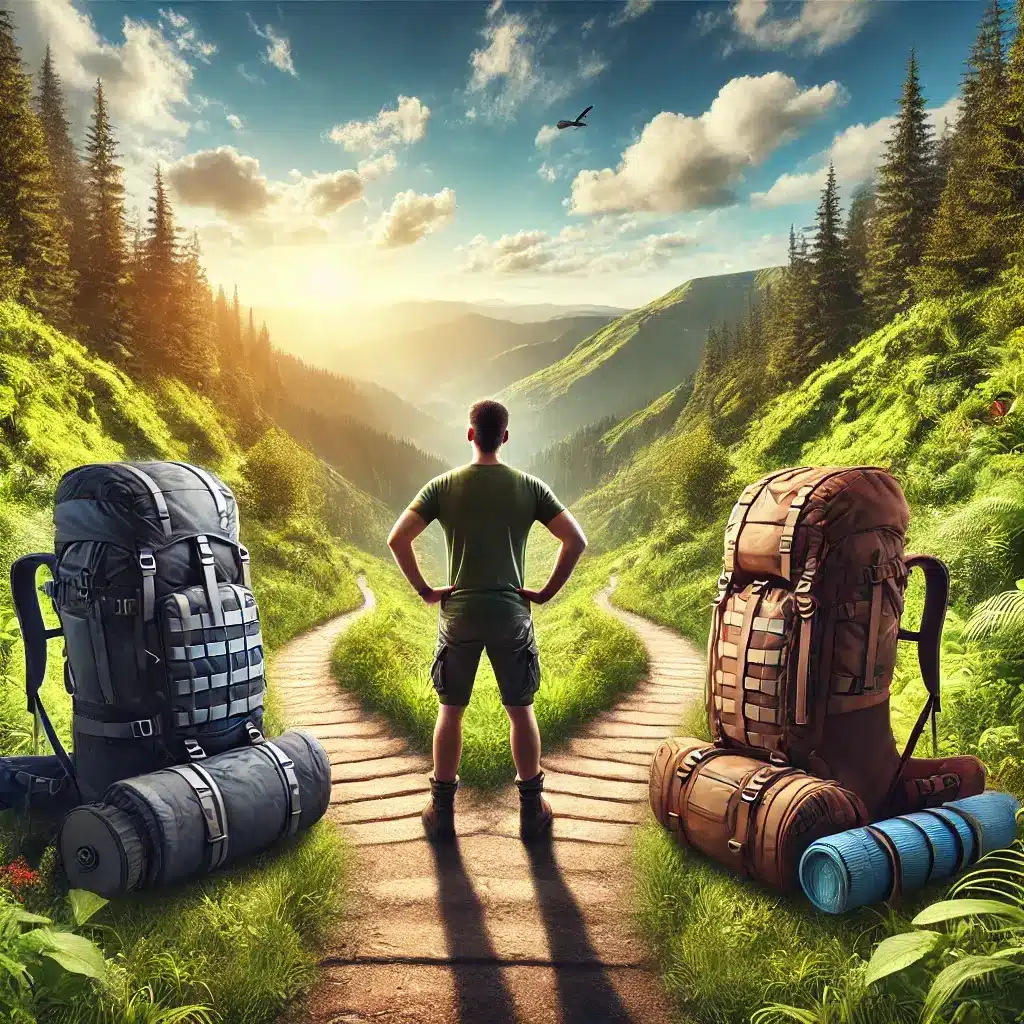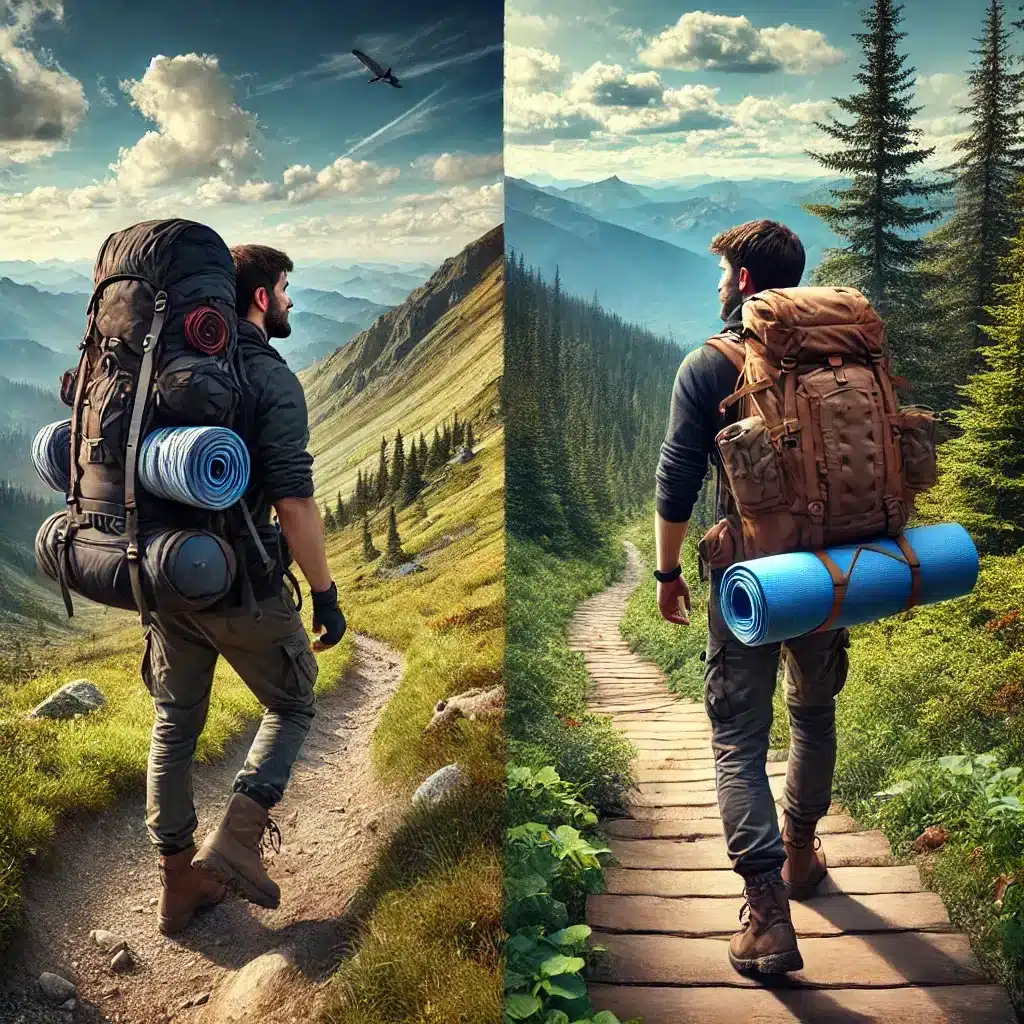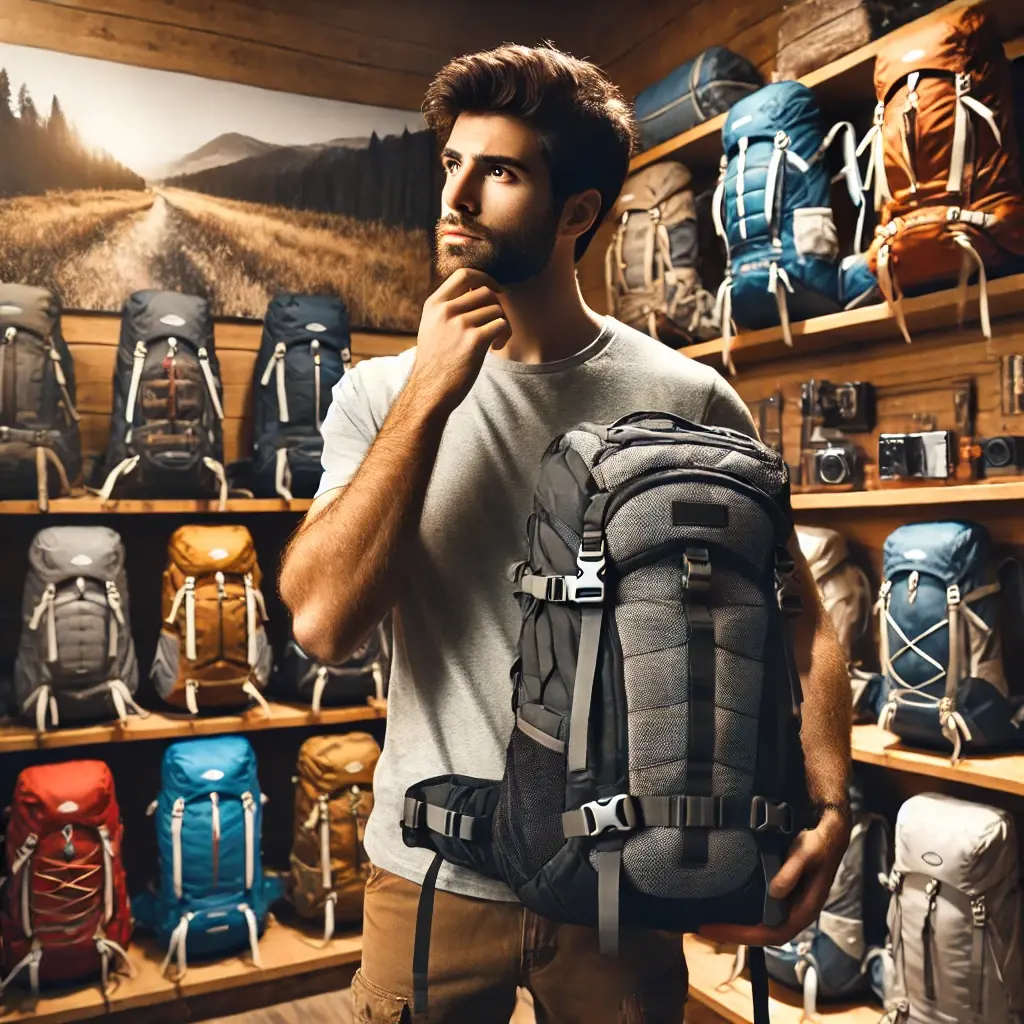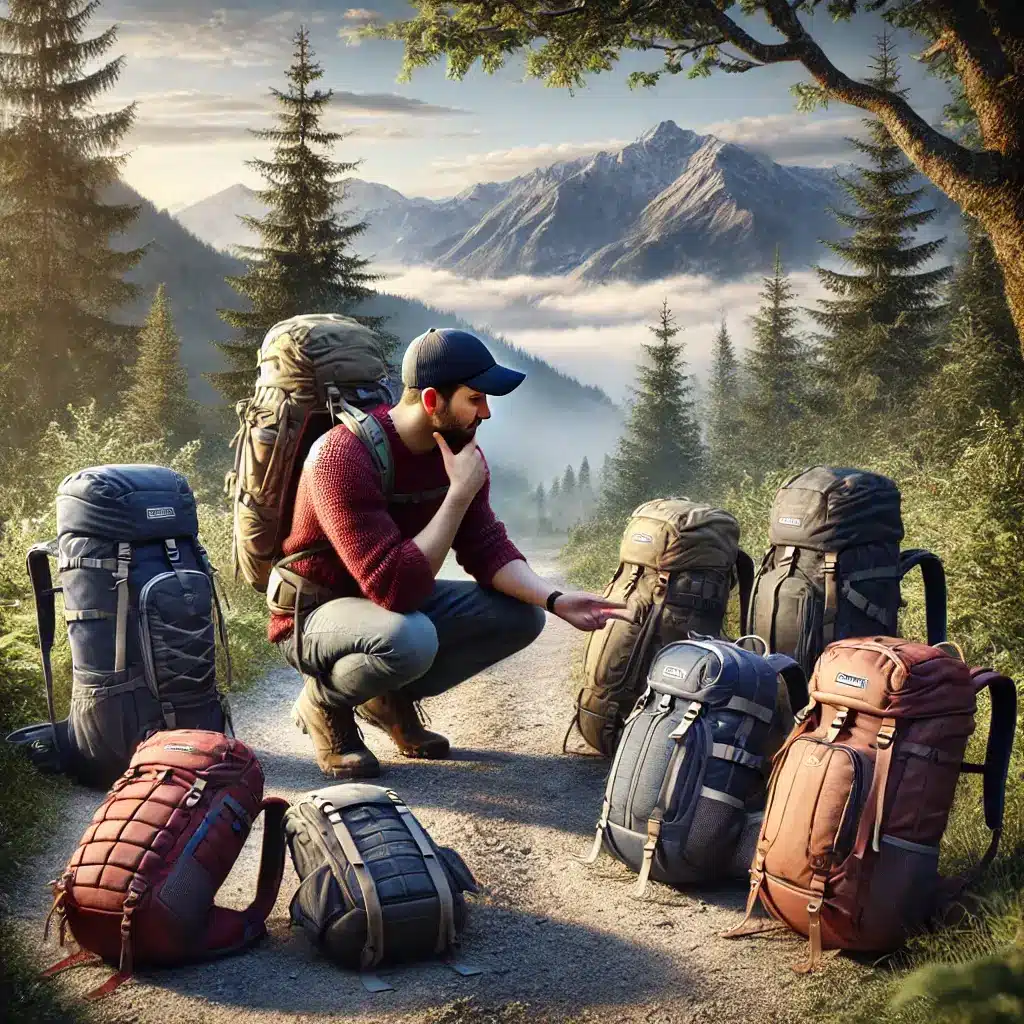A day hike can be very tricky when selecting the right kind of backpack. Even though a smaller backpack is suitable for carrying all your needs, such as your sleeping bag and pad, it is very uncomfortable. On the other hand, one that’s too large can become a burden. This extra weight might make your hike less enjoyable. Understanding liter capacity and torso length is key to finding the right fit. Many backpackers also struggle with poor weight distribution, leading to back pain. Whether you are taking the backcountry or just need a lightweight pack for the short day hike, this guide covers all you need to know to make the best decision for backpack size for your adventure.
Understanding Backpack Sizes: What You Need to Know
Finding the perfect backpack size makes all the difference in comfort and efficiency. Selecting the right pack is vital for every hike. This includes both short-day trips and longer backpacking adventures. It helps you carry only what you need and avoid overloading.
Different Backpack Sizes Explained
Travel backpacks vary in size depending on the trip. For a day hike, packs typically range from 15L to 30L, perfect for carrying essentials. For longer backpacking trips, the size range expands to 40L to 70L, providing room for additional gear like a sleeping pad or big 3 items (tent, sleeping bag, and stove). A 40L backpack offers a great balance for multi-day trips or even fast and light adventures.
How to Measure Backpack Size (Liters)
It is measured in liters, showing how much you can carry in it. For short day hikes, a pack of 20 to 30 liters is perfect. A longer journey or backpacking is a different case where a pack of 40 liters and above will do. This helps to carry all the basic gear. If you plan to be out on a journey that lasts several days, consider a backpack of size 50 to 70 liters. This helps you keep the load comfortable.
Common Backpack Sizes for Hikers
For a day hike, the perfect size for you would be 20L-30L; it would have enough space to carry on basic essentials, which would be water and a snack. A 40L-50L would be useful when going further with extra equipment for longer treks, as such a size offers space to store additional items such as a lightweight tent and sleeping pad.
How to Choose the Right Backpack for Your Day Hike?

A travel backpack chosen for a day hike is highly essential. It keeps you comfortable, makes things convenient, and helps with weight distribution. A good travel backpack fits well. It prevents strain and helps you carry your essentials easily. This is true for short outings or longer backpacking trips.
Determine the Best Size for Your Hike
The best size for a day hike is usually between 15L and 30L. A pack of this size allows you to fit everything you need, including water, snacks, and a sleeping pad, without being too bulky. If you prefer an ultralight setup, go for a smaller travel backpack suited for a fast and light trip.
Comfort Range for Carrying a Pack
A comfortable backpack fit is essential to preventing discomfort. Look for padded straps, a flexible hip belt, and a ventilated back panel. The comfort range of a pack will depend on the pack’s weight capacity. Carrying a pack that weighs 10-20% of your body weight feels most comfortable. When hiking in a group you can split the load, making it easier for both people.
Right Features for Your Needs
For a good day hike, look for features like multiple compartments, hydration reservoir sleeves, and external gear loops. If you need to fit everything, consider an Osprey pack with a size range that allows for both backpacking trips and day hikes. Compression straps on a pack of this size help distribute weight evenly for better comfort.
Test the Fit Before You Buy
Before purchasing, try on the Osprey or another recommended brand to ensure a proper fit. Adjust the straps and test how it feels with some weight inside. If you need to buy a pack, visit an outdoor store where you can try different sizes. The right pack makes a big difference for both multi-day backpacking trips and shorter hikes.
Essential Features for Day Hikes and Backcountry Adventures
Choose a backpack with the right features. This matters as much as picking the right size. No matter if you’re hiking for a day or backpacking longer, these key features keep you comfortable and prepared for anything.
| Feature | Why It’s Essential | Best for |
|---|---|---|
| Backpack Fit | Adjustable straps and a padded hip belt ensure comfort and balance weight effectively. | Multi-day backpacking trip, hiking with a partner |
| Capacity & Organization | A well-organized backpack helps fit everything with compartments and gear loops. | Day hike, multi-day backpacking trip |
| Hydration Compatibility | Built-in water reservoir sleeves or bottle pockets allow you to carry everything you need to stay hydrated. | Backpacking packs, REI hydration-compatible models |
| Weather Resistance | Waterproof material and rain covers protect gear in rough conditions. | Backcountry, fast, and light hikers |
| Comfort Range & Weight Distribution | Compression straps stabilize the load, making carrying a pack easier. | Need to carry extra stuff sack, extra clothes |
| Essential Accessories | A headlamp, stuff sack, and extra clothes help you stay prepared for unexpected situations. | Multi-day backpacking trip, backcountry travelers |
| Pack Size Considerations | If the size of the pack is too small, you may need a larger backpack to store gear properly. | Those who need to buy a new pack or upgrade from a previous size range |
Backpacking vs. Day Hiking: Do You Need Different Sizes?

The right backpack size depends on your trip. Are you going for a day hike? Or are you preparing for an overnight or weekend adventure? Every adventure needs specific gear. Choosing the right pack helps you fit all you need without extra bulk.
Backpack Size for a Day Hike
For day hikes, carry a travel backpack ranging from 10 to 30 liters. It offers ample space to fit all your gear lists, including water bottles, snacks, a headlamp, and extra clothes.
- Lightweight and compact for better mobility
- Enough room to expect to fit everything essential
- Many daypacks include a hip belt for extra support
A multi-day backpacking trip
Use a large pack between 40 to 70 liters for a multi-day backpacking trip. This size lets you carry essentials like a bivy, sleeping pad, food, and shelter.
- A 40L backpack is great for overnight and weekend trips
- 50L–70L size packs are best for carrying heavier loads
- Extra compartments help keep your gear list organized
Hiking with a Partner vs. Solo Hiking
If you’re hiking with a partner, you can share gear, meaning a bulkier pack might not be necessary. However, solo hikers often need to expect to fit everything in their pack, requiring a bigger size.
Do You Need to Buy a New Pack?
If your old size doesn’t meet your needs, consider getting a new pack. Brands like Osprey and REI make durable backpacks in various styles. Before selecting a carry-on for your flight, be sure to check the airline’s size restrictions. This way, you’ll know your pack meets their requirements.
The Best Backpack Size for Sleeping Bags, Pads, and More
Choosing the right backpack size depends on what gear you need. Grab your sleeping bag, sleeping pad, and other must-haves. The right backpack makes a difference between a fast walk and a long journey. Here are some important factors to keep in mind:
- Sleeping Gear Compression: Use storage sacks to pack down your sleeping bag and pad. This creates more space and keeps your gear organized. It is especially helpful when you pack light for a thru-hike.
- Pack Capacity: Opt for a backpack between 40L and 70L to comfortably fit everything, like your sleeping pad, food, and water. A 70L backpack is ideal for longer trips, while a 40L backpack suits shorter ones.
- Weight Distribution: For better comfort, pack heavy items like your sleeping pad closer to your back. Good distribution prevents strain and helps the pack fit comfortably.
- Fit and Comfort: Make sure your backpack fits well. Check that the straps and hip belts are adjustable and padded. A good fit leads to a more enjoyable experience, whether you’re carrying food and water or a change of clothes.
- Pack Organization: You can organize your backpack with multi-compartmentalization that helps keep everything you want to carry neat and accessible. You look for places to stash your water bottles, among others.
- Weather Resistance and Durability: If you plan a long trek or backpacking trip, ensure your backpack is weather-resistant. It’s good to have a durable pack that can handle the rain or sun and keep your gear protected.
Backpacking Tips for Beginners: How to Choose the Best Pack

Choosing the right backpack can make a trip fun or frustrating. Whether it’s for one night or longer, a poorly fitting backpack is a hassle. Here’s a simple guide for beginners: It will help you choose the right pack and avoid common mistakes.
Common Mistakes Beginners Make with Backpacking Packs
- Choosing the Wrong Size – A 40L backpack works well for short trips. A 70L pack is better for longer journeys.
- Backpack fit matters – if the hip belt and shoulder straps don’t fit well, your pack will feel heavy. This can make it uncomfortable to carry.
- Overpacking Unnecessary Items – Take what you need. Leave out any extras that won’t be useful on your journey.
- Watch the Weather – If it’s sunny, you may not need rain gear. But always prepare for sudden changes.
- Forget Weight Distribution – Pack heavy items like food and water close to your back. This helps with balance and stability.
Top Tips for Choosing the Right Backpack Size
- Pick a Pack Based on Trip Length – A 40L pack works for short trips, while 50-70L packs are better for longer thru-hike adventures.
- Think About Airline Rules – If you’re flying Ryanair or another budget airline, choose a pack under 40L to fit airline carry-on limits.
- Prioritize Comfort and Adjustability– Select a padded hip belt and an adjustable torso for better comfort.
- Opt for Minimalist Backpacking – If you enjoy minimalism, take an ultralight one-person tent, a light tarp, and compact gear. This helps keep your pack weight low.
- Leave Extra Breathing Room – Your pack should fit unexpected essentials while remaining easy to handle.
- Use Different Packing Strategies – A hammock or hand-me-down gear can lighten your load without sacrificing comfort.
How to Avoid Overpacking on Your First Trip?
| Key Factor | Why It Matters |
|---|---|
| Pack Only Essentials | Stick to the gear you need and avoid unnecessary weight. |
| Create a Gear List | Plan to ensure you certainly carry only what’s required. |
| Pick the Right Size Pack | A bigger size isn’t always better—choose what fits your trip’s needs. |
| Smart Weight Distribution | Heavier items like food and water should be packed close to your back. |
| Test Before You Go | Try wearing your fully loaded backpack at home to ensure comfort. |
| Invest in Lightweight Gear | Buying ultra-light variants of tents, sleeping bags, and stoves reduces overall pack weight. |
| Check Zippers & Durability | A broken zipper on the trail can cause frustration—choose quality gear. |
Conclusion:
The right backpack depends on the length of your trip and the gear you need. A 10-liter pack is great for short hikes, while larger packs can fit more essentials. If you’re maybe gearing up for a longer adventure, choose wisely—some options are often bulky but necessary. When looking for the best pack, remember that backpacks come in various sizes and features. A lightweight tarp can save space, and it’s likely to see many hikers using one. The best advice? Test your pack to ensure everything can fit inside comfortably. Trust us, though, a well-packed bag makes all the difference!
Frequently Asked Questions:
Is a 50L backpack big enough for hiking?
Yes, a 50L backpack is enough for overnight and weekend trips, fitting essentials without being too bulky.
How big a bag do you need for backpacking?
The right backpack size depends on your trip length. For 1 or 2 days, a 40L-50L pack works well. So, 50L-70L can be easy for longer adventures.
Is a 60L backpack too big for a weekend trip?
A sixty-liter backpack may seem sizable for an overnight trip, yet it is most beneficial if you have some extra gear or camping equipment.
